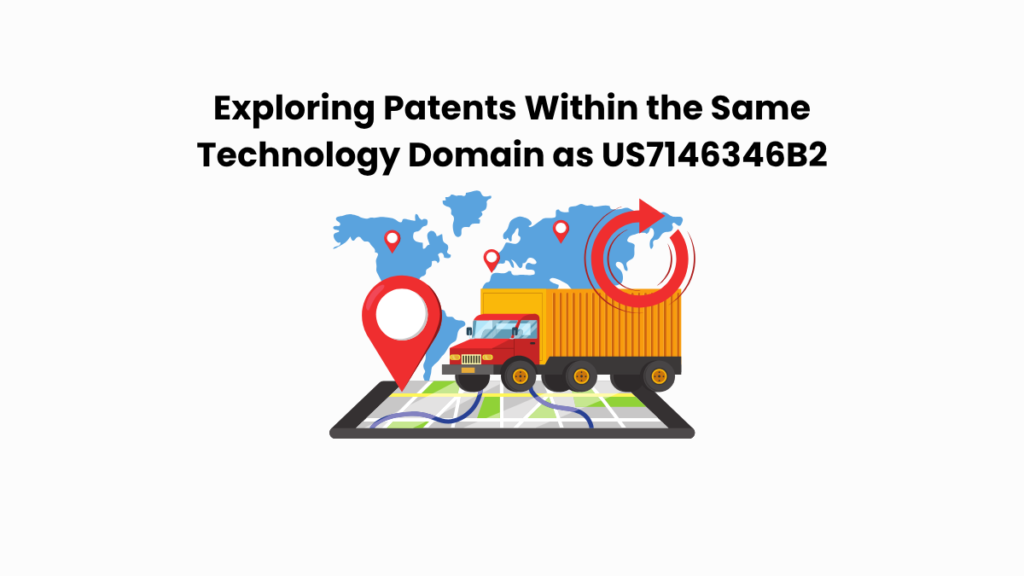Some patents quietly support niche systems. Others become critical touchpoints in how modern industries operate. US7146346B2 is firmly in the latter camp.
Recently, this patent has come into focus in the matter of OBD Sensor Solutions LLC v. UAB Xirgo. It has drawn attention from those analyzing advancements in vehicle telematics and onboard diagnostic (OBD) data communication. Without focusing on legal arguments, it’s clear that the concepts behind remotely monitoring vehicle diagnostics and transmitting data through modular interfaces have had wide technological ripple effects.
In this article, we turn to the Global Patent Search (GPS) platform to explore a landscape of similar inventions. Our goal is to understand the ecosystem of patents that echo the innovations described in US7146346B2. Whether you’re involved in IP strategy, product development, or simply curious about how connected vehicle technologies have evolved, this feature-mapped review provides a precise and practical lens.
Understanding Patent US7146346B2
Patent US7146346B2 describes a fuzzy-logic-based on-board device designed to monitor, process, and analyze motor vehicle operating data. This stand-alone unit connects directly to a vehicle’s internal network via standard diagnostic connectors (OBD/EOBD). It is also capable of processing sensor data using embedded intelligence. The processed data is stored and used to identify vehicle usage patterns, supporting real-time decision-making by existing vehicle control systems. The invention also supports wireless communication for remote diagnostics and data sharing.
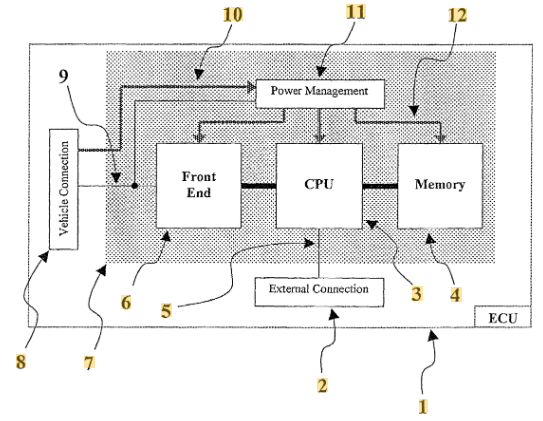
Its four key features are
#1. Fuzzy-logic data analysis: Uses fuzzy inference to evaluate vehicle sensor data and form “genetic” statistical profiles (genes and DNAs) representing usage patterns.
#2. Real-time sensor integration: Gathers data through a vehicle’s shared network (CAN, TTP, or K-line) and interacts with electronic control units (ECUs) without requiring sensor modifications.
#3. Compact, embedded architecture: Built into a single printed circuit board with integrated CPU, memory, and front-end logic, capable of being installed within or alongside vehicle ECUs.
#4. Remote connectivity: Includes interfaces for wireless transmission, radio, and Ethernet to enable external communication, diagnostics, or fleet monitoring.
This patent introduces a sophisticated, data-centric control unit that integrates seamlessly with a vehicle’s internal systems. Its combination of embedded fuzzy logic and modular connectivity makes it relevant to a wide range of applications, from optimizing vehicle performance to supporting telematics and fleet diagnostics.
Similar Patents As US7146346B2
To explore the innovation landscape surrounding US7146346B2, we ran the patent through the Global Patent Search tool. Below is a quick glimpse of the GPS tool in working:
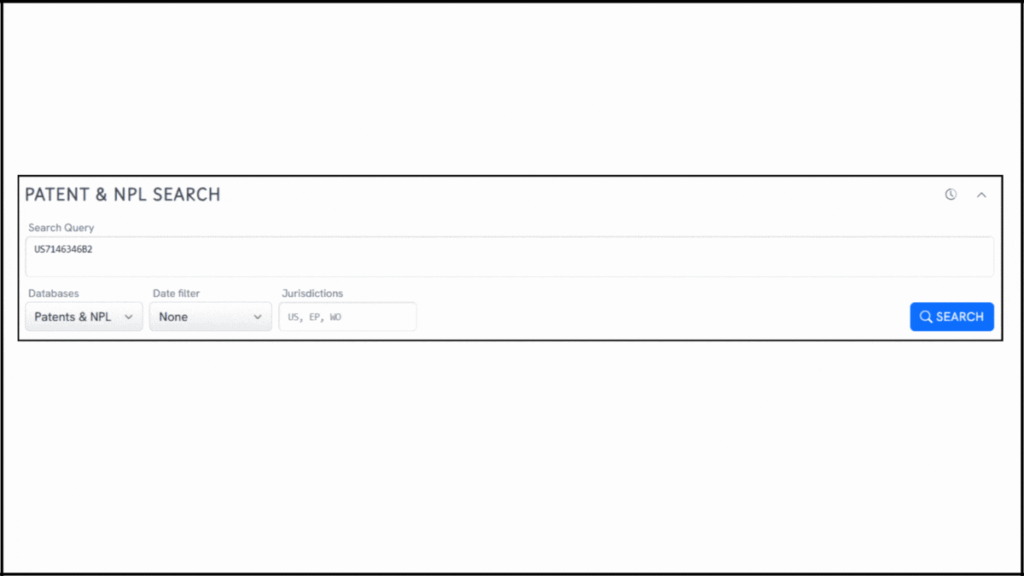
Source: Global Patent Search
This analysis surfaced a list of related patents that share technical similarities in control logic, sensor integration, and data-driven decision-making in vehicle systems. Below, we highlight five such references that echo comparable concepts in fuzzy reasoning and operational data management. These examples offer a broader perspective on how similar challenges have been addressed across various vehicle technologies.
#1. JPH04310413A
This Japanese patent JPH04310413A, published in 1992, introduces an early application of fuzzy logic for dynamic vehicle behavior control, focused on real-time estimation of driving environments and adaptive suspension response. It forms a conceptual cornerstone in using inference engines to optimize ride performance based on operating conditions.
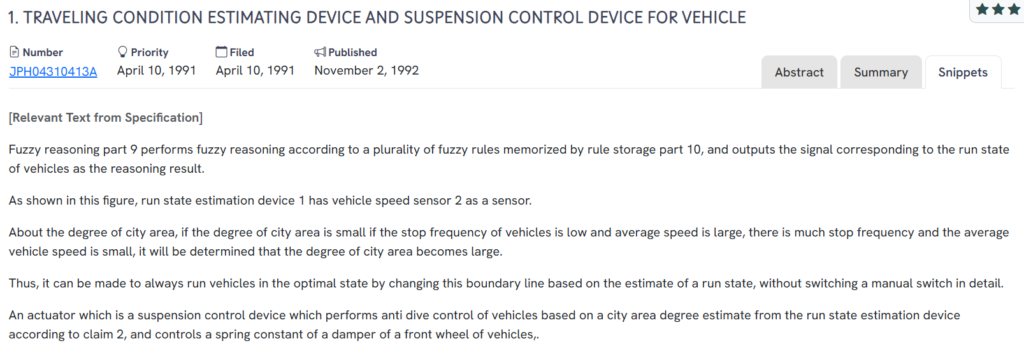
What this patent introduces to the landscape?
- Fuzzy logic reasoning: Evaluating vehicle run states based on speed and stop frequency data.
- Run state estimation device: Integrating multiple sensors, including vehicle speed inputs.
- City area classification: Model based on frequency of stops and average speed, determining the “urban intensity” of the driving environment.
- Automatic boundary adjustment: For control decisions, eliminating the need for manual switch adjustments.
- Suspension actuation logic: Modifies damper spring constants based on environmental classifications.
How it connects to US7146346B2?
While US7146346B2 deals with a broader system for monitoring and processing operational vehicle data via fuzzy logic, JPH04310413A presents a targeted use case, adapting vehicle suspension in response to urban driving profiles. Both use fuzzy inference to translate sensor data into system control decisions, highlighting:
- Fuzzy rule application for dynamic decision-making
- Real-time sensor-driven state estimation
- Adaptive behavior of vehicle systems without manual inputs
Why this matters?
This reference underscores how fuzzy logic was applied early on to interpret nuanced driving behavior. It reflects a shared design ethos with US7146346B2, processing raw vehicle data into actionable parameters using rule-based reasoning. Understanding this historical implementation deepens insight into how modern, modular data analysis systems in vehicles have evolved.
#2. JPH04325324A
This Japanese patent JPH04325324A, published in 1992, discloses a system for estimating driving modes using various vehicle sensor inputs, processed through either fuzzy reasoning or numerical computation. It represents an early attempt at integrating sensor-derived data with predictive control systems to inform vehicle behavior.
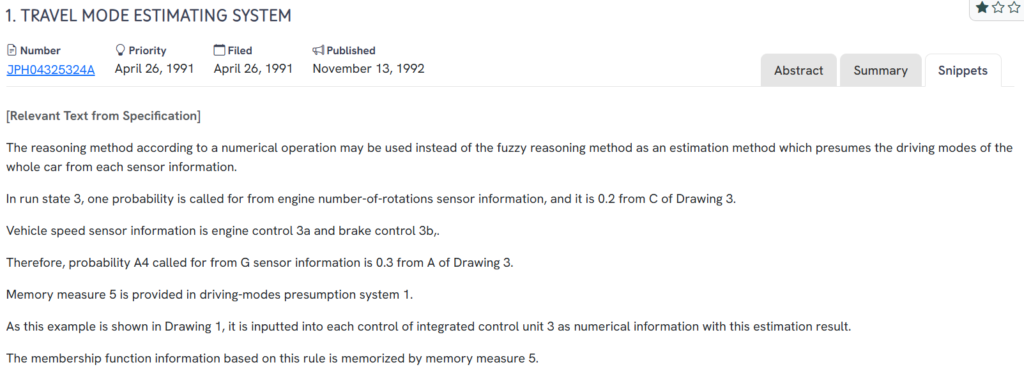
What this patent introduces to the landscape?
- Driving mode estimation logic: Aggregates data from engine RPM, vehicle speed, and G-force sensors.
- Flexible inference engine: Capable of using either fuzzy reasoning or traditional numerical operations.
- Control integration framework: Where estimated results inform the engine and brake control units.
- Probability-based output: For evaluating the likelihood of specific driving states based on multi-sensor input.
- Memory-based rule storage: For managing fuzzy membership functions and facilitating estimation repeatability.
How it connects to US7146346B2?
US7146346B2 and JPH04325324A both rely on the intelligent processing of vehicle operation data to form high-level conclusions about vehicle behavior. Each uses probabilistic or fuzzy logic models to synthesize multiple sensor inputs. Notably:
- Both support fuzzy or probabilistic estimation methods
- Both store and apply inference rules using internal memory
- Each system transforms low-level signals into high-value operational insights for control logic
Why this matters?
This reference showcases the transition from sensor-level signal processing to structured, mode-based estimations in vehicle systems. It mirrors the logic and architecture that US7146346B2 expands upon—offering a foundational lens through which to view real-time vehicle analytics and data-driven decision control.
#3. JPH1024784A
This Japanese patent JPH1024784A, published in 1998, outlines an integrated vehicle data logging and diagnostics system that leverages real-time sensor information for predictive maintenance and driver feedback. It combines in-vehicle computation with remote data transmission to streamline both analysis and service delivery.
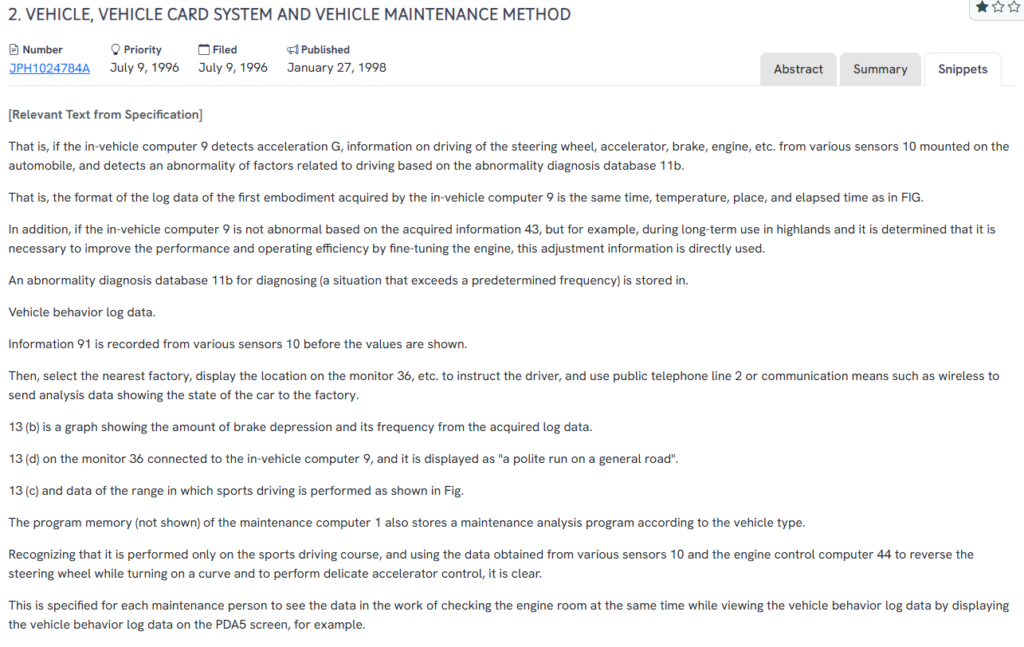
What this patent introduces to the landscape?
- In-vehicle computer for sensor aggregation: Collects data from steering, brake, engine, and acceleration sensors.
- Abnormality diagnosis database: Matches real-time sensor input against predefined fault patterns.
- Driving behavior logging: Records parameters like brake usage, steering input, and driving style over time.
- Condition-based engine tuning: Recommends engine performance adjustments for specific conditions (e.g., long-term highland driving).
- Remote communication for service coordination: Transmits vehicle state data via phone or wireless to service centers for preemptive diagnostics.
How it connects to US7146346B2?
US7146346B2 and JPH1024784A both focus on transforming live vehicle operation data into useful insights through intelligent onboard systems. While JPH1024784A emphasizes diagnostics and service connectivity, the architectural parallels include:
- Real-time collection and interpretation of sensor data
- Logging and storing vehicle operation patterns
- Providing actionable insights for vehicle tuning and maintenance
- Use of embedded computing within the vehicle to support data-driven decisions
Why this matters?
This reference contributes to the evolving concept of smart vehicles, those that can self-monitor and assist in their own maintenance. It complements the fuzzy-logic-based approach of US7146346B2 by demonstrating another way in which vehicle data can be contextualized and acted upon to improve long-term performance and serviceability.
#4. EP0228636A1
This European patent EP0228636A1, published in 1987, presents a pattern-recognition-based system that evaluates multidimensional vehicle parameters to detect and preemptively respond to critical operating conditions. It illustrates an early application of machine pattern matching for real-time vehicle safety monitoring.
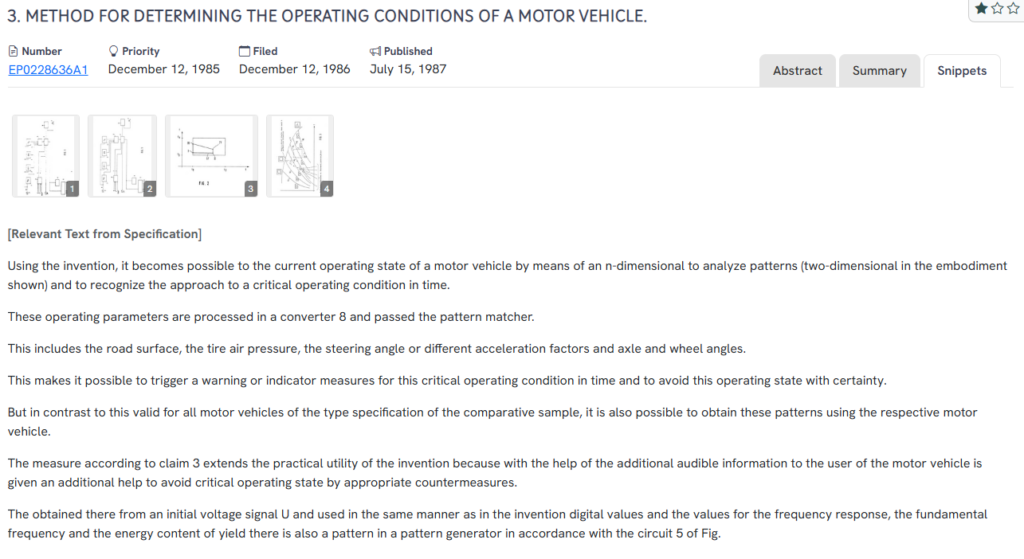
What this patent introduces to the landscape?
- N-dimensional pattern recognition: Uses multiple simultaneous parameters (e.g., acceleration, wheel angles, steering angle, tire pressure) to identify operational states.
- Pattern matcher and converter: Processes sensor inputs to create digital patterns that reflect real-time vehicle dynamics.
- Critical condition detection: Alerts drivers to unsafe or suboptimal driving conditions before they escalate.
- Vehicle-specific pattern learning: Adaptability to individual vehicle behaviors rather than relying solely on generic benchmarks.
- Audible feedback system: Uses sound alerts to help drivers correct risky driving behavior or settings.
How it connects to US7146346B2?
Both EP0228636A1 and US7146346B2 are built on the core idea of processing multidimensional vehicle data to derive statistical or behavioral profiles that enhance safety and performance. Key overlaps include:
- Use of real-time sensor data to assess vehicle status
- Pattern generation and analysis to anticipate critical conditions
- A focus on early intervention based on learned or inferred driving patterns
- Embedded systems designed for on-board monitoring and feedback
Why this matters?
This reference shows an early evolution toward intelligent in-vehicle analytics, providing not just raw data but actionable warnings based on behavioral models. It resonates with US7146346B2’s approach of transforming vehicle usage data into structured insights, utilizing methods such as fuzzy logic or pattern recognition to inform both immediate and long-term system decisions.
#5. DE4428351A1
This German patent DE4428351A1, published in 1995, introduces a comprehensive fuzzy logic-based framework for estimating vehicle maneuvering states and adjusting operational properties in real-time. It combines frequency analysis, environmental classification, and control strategy optimization to dynamically adapt the vehicle’s behavior.
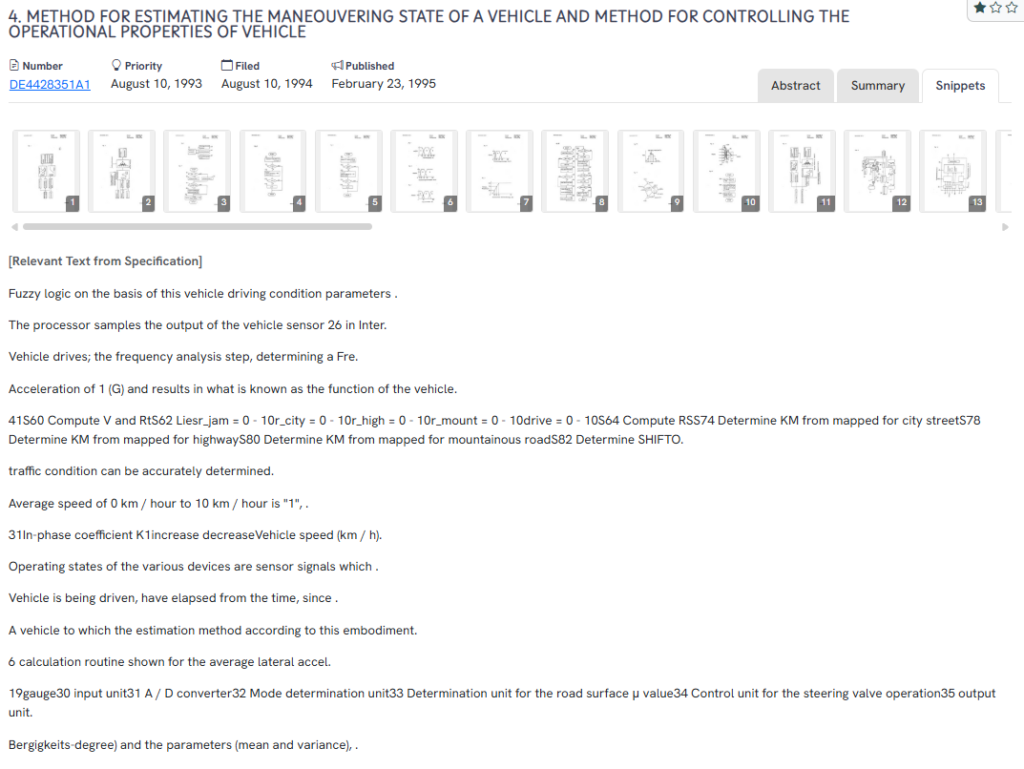
What this patent introduces to the landscape?
- Fuzzy logic inference system: Based on multiple driving condition parameters.
- Sensor-driven estimation: Of driving environment (e.g., city, highway, mountainous) through acceleration, speed, and average lateral forces.
- Frequency-based analysis: To identify distinct driving modes and match them to pre-defined maps for various terrains.
- Control system: For steering and drive adaptation based on real-time assessments.
- Mode determination and surface-type identification: Using in-phase coefficients and road μ (friction) values.
How it connects to US7146346B2?
Both patents emphasize the use of sensor-derived operational parameters to guide intelligent control systems. While DE4428351A1 leans heavily into real-time environment classification and terrain-based logic, it parallels US7146346B2 in several critical areas:
- Fuzzy logic used to infer driving states
- Continuous data sampling and behavioral patterning
- Estimation frameworks that adapt vehicle functions in response to driving context
- Focus on integrating processing units with vehicle control architectures
Why this matters?
This reference extends the notion of onboard intelligence by layering contextual awareness into the vehicle’s behavior. It aligns well with US7146346B2’s aim to synthesize sensor data into actionable intelligence, showing how fuzzy logic and dynamic profiling can optimize vehicle performance and safety across diverse terrains and usage modes.
How to Find Related Patents Using Global Patent Search?
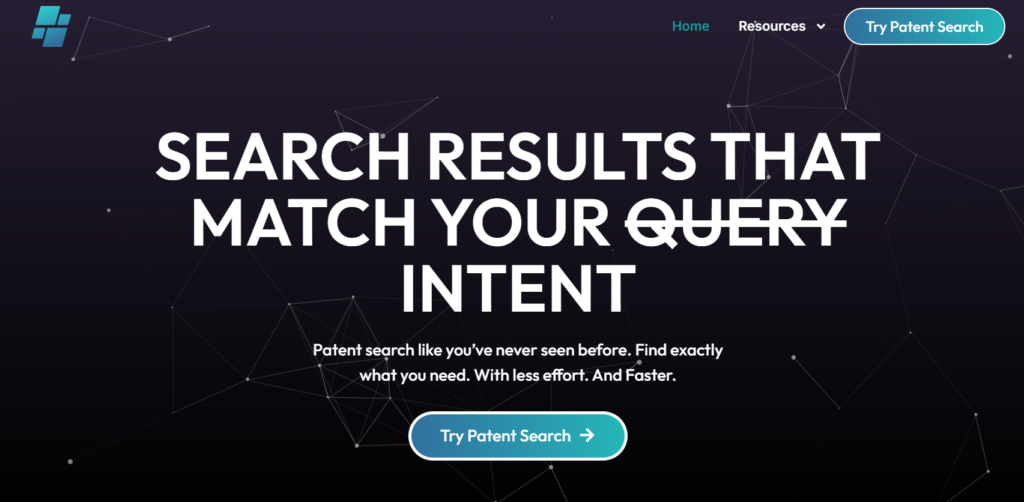
Understanding the broader innovation landscape around a patent can be essential for product planning, technical benchmarking, or exploring interconnected systems. The Global Patent Search (GPS) tool is designed to streamline this process, helping users uncover comparable inventions with similar logic, architecture, or control methodologies. Here’s how it works:
1. Enter the patent number into GPS: Simply input the patent number, such as US7146346B2, into the GPS interface. The tool automatically converts the entry into an intelligent search query, which can be further refined using domain-specific terminology or keywords.

2. Explore conceptual snippets: Rather than traditional feature-by-feature mapping, GPS now displays intelligent text snippets. These highlight where functional similarities appear in other patents, focusing on the essence of the system’s operation or design.

3. Identify related inventions: The tool surfaces patents that share operational principles, like data-driven diagnostics, fuzzy logic, or embedded control systems, providing valuable insight into how similar problems have been addressed.
4. Compare concepts without legal framing: GPS emphasizes system-level functionality and design, helping users understand technical overlaps without interpreting legal claims or entering into contentious areas.
5. Accelerate multi-sector analysis: Whether you’re in automotive electronics, AI-based control, or sensor-driven diagnostics, GPS supports fast, intuitive exploration across patent ecosystems that might otherwise be hard to navigate.
With these capabilities, Global Patent Search enables engineers, analysts, and innovators to trace the evolution of technologies and discover new connections that inform smarter development strategies.
Disclaimer: The information provided in this article is for informational purposes only and should not be considered legal advice. The related patent references mentioned are preliminary results from the Global Patent Search (GPS) tool and do not guarantee legal significance. For a comprehensive related patent analysis, we recommend conducting a detailed search using GPS or consulting a patent attorney.

